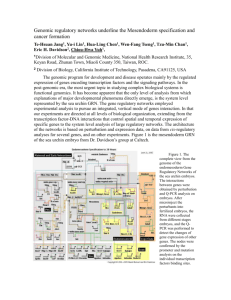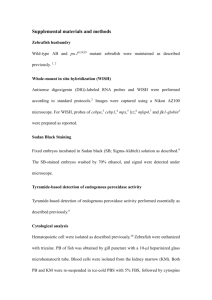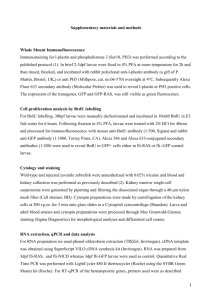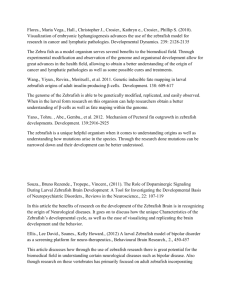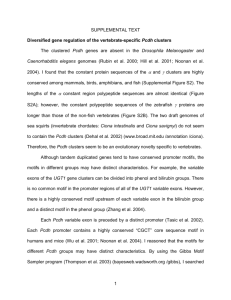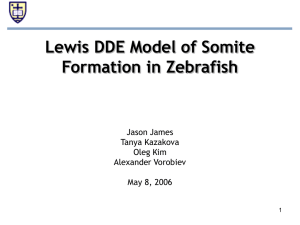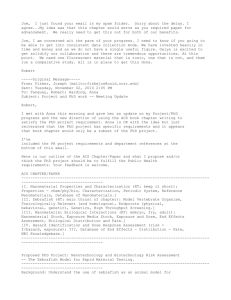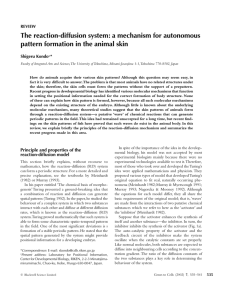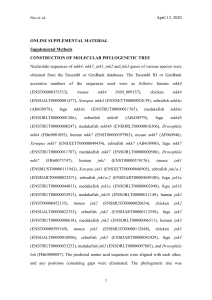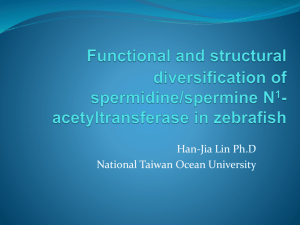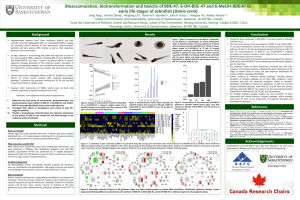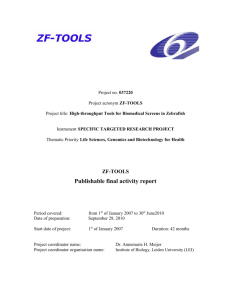Zebrafish as a model organism for the study of functional genomics
advertisement
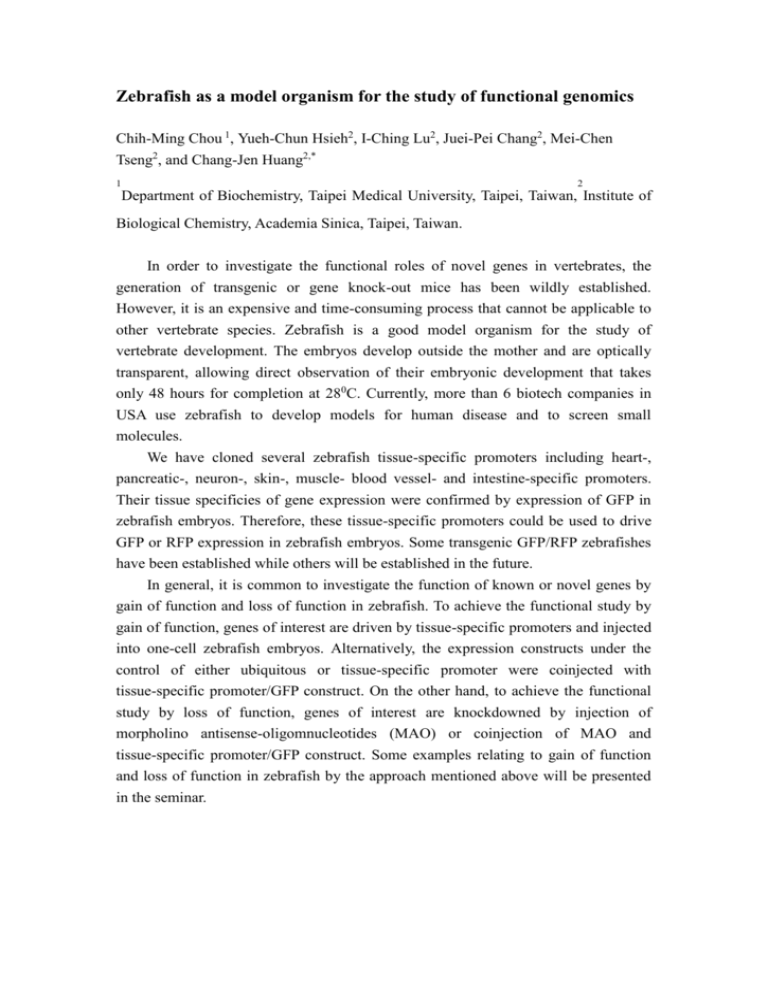
Zebrafish as a model organism for the study of functional genomics Chih-Ming Chou 1, Yueh-Chun Hsieh2, I-Ching Lu2, Juei-Pei Chang2, Mei-Chen Tseng2, and Chang-Jen Huang2,* 1 2 Department of Biochemistry, Taipei Medical University, Taipei, Taiwan, Institute of Biological Chemistry, Academia Sinica, Taipei, Taiwan. In order to investigate the functional roles of novel genes in vertebrates, the generation of transgenic or gene knock-out mice has been wildly established. However, it is an expensive and time-consuming process that cannot be applicable to other vertebrate species. Zebrafish is a good model organism for the study of vertebrate development. The embryos develop outside the mother and are optically transparent, allowing direct observation of their embryonic development that takes only 48 hours for completion at 280C. Currently, more than 6 biotech companies in USA use zebrafish to develop models for human disease and to screen small molecules. We have cloned several zebrafish tissue-specific promoters including heart-, pancreatic-, neuron-, skin-, muscle- blood vessel- and intestine-specific promoters. Their tissue specificies of gene expression were confirmed by expression of GFP in zebrafish embryos. Therefore, these tissue-specific promoters could be used to drive GFP or RFP expression in zebrafish embryos. Some transgenic GFP/RFP zebrafishes have been established while others will be established in the future. In general, it is common to investigate the function of known or novel genes by gain of function and loss of function in zebrafish. To achieve the functional study by gain of function, genes of interest are driven by tissue-specific promoters and injected into one-cell zebrafish embryos. Alternatively, the expression constructs under the control of either ubiquitous or tissue-specific promoter were coinjected with tissue-specific promoter/GFP construct. On the other hand, to achieve the functional study by loss of function, genes of interest are knockdowned by injection of morpholino antisense-oligomnucleotides (MAO) or coinjection of MAO and tissue-specific promoter/GFP construct. Some examples relating to gain of function and loss of function in zebrafish by the approach mentioned above will be presented in the seminar.





